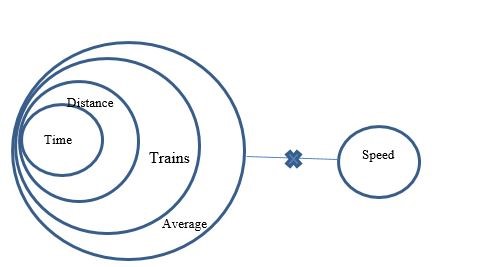Question
Statement : All times are distances. All
distances are trains. All trains are averages. No average is speed. Conclusion: I. Some averages may not be distances. II. Some speeds are not trains. III. Some speeds are trains. IV. All times are averages. In each of the questions below are given four statements followed by four conclusions numbered I, II and III and IV. You have to take the given statements to be true even if they seem to be at variance with commonly known facts. Read all the conclusions and then decide which of given conclusions logically follows from the given statements disregarding commonly known facts.Solution
All distances are trains (A) + All trains are averages (A) ⇒ All distances are averages (A) ⇒ Conversion ⇒ Some averages are distances (I) ⇒ probable conclusion ⇒ Some averages may not be distances (I). Hence, Conclusion I follows. All trains are averages (A) + No average is a speed (E) ⇒ No train is an speed (E) ⇒ Conversion ⇒ Some speeds are not trains (O). Hence, conclusion II follows but conclusion III does not follow. All times are distance (A) + All distances are trains (A). ⇒ All times are trains (A) + All trains are averages (A) ⇒ All times are averages. Hence, conclusion IV follows. ALTERNATE SOLUTION: Minimal Possibility 
45.22% of (71.9 x 5.01) + 69.97 =?
10.10% of 999.99 + 14.14 × 21.21 - 250.25 = ?
What approximate value will replace the question mark (?) in the following?
24.99...
- What approximate value will come in place of the question mark (?) in the following question? (Note: You are not expected to calculate the exact value.)
2470.03 ÷ 64.98 x 39.9 = ? + 20.32
19.89% of 449.67 + 14.67% of 299.89 - 9.89% of 99.79 = ?
What approximate value will come in place of question (?) in the following given expression? You are not expected to calculate the exact value.
...- What approximate value will come in place of the question mark (?) in the following question? (Note: You are not expected to calculate the exact value.)
(64.99% of 599.91 + 49.99% of 199.99 + 135.11) = ?2
What approximate value will come in place of the question mark (?) in the following question? (Note: You are not expected to calculate the exact value.)...


